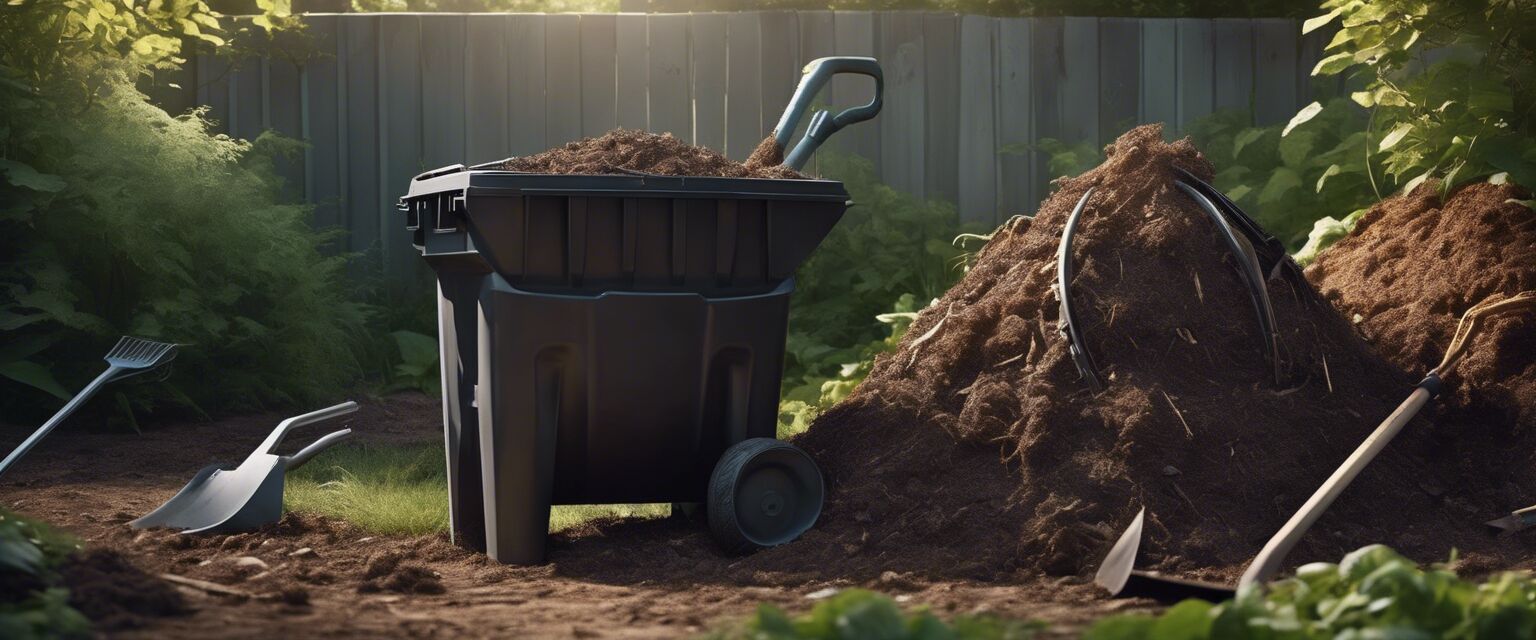
How to Start Composting
Key Takeaways
- Composting transforms organic waste into nutrient-rich soil.
- Essential materials include greens, browns, water, and air.
- Composting can be done easily at home with the right tools.
- Indoor composting options are available for those with limited space.
Composting is a fantastic way to reduce waste while creating nutrient-rich soil for your garden. With just a few simple steps, you can transform kitchen scraps and yard waste into valuable compost. This guide will walk you through the process of starting composting at home, including the essential tools and materials you need.
Understanding composting
Composting is the natural process of recycling organic matter, such as leaves and food scraps, into a rich soil amendment known as compost. The composting process involves microorganisms breaking down organic material in a controlled environment.
Benefits of composting
- Reduces waste sent to landfills.
- Improves soil health and structure.
- Enhances plant growth and yields.
- Conserves water by improving soil moisture retention.
Essential tools and materials needed
| Tool/Material | Description |
|---|---|
| Compost bin or tumbler | A container for holding compost materials. Tumblers speed up the process. |
| Pitchfork or shovel | Used to turn and aerate the compost pile. |
| Chopping tool | To chop larger material into smaller pieces for faster decomposition. |
| Compostable bags | To collect kitchen scraps without creating additional waste. |
| Water source | To keep the compost pile moist but not soggy. |
How to start composting: A step-by-step guide
Step 1: Choose a composting method
There are several methods of composting, including:
- Traditional composting: Piling organic waste in a designated area.
- Compost tumblers: Enclosed bins that allow for easy mixing and aeration.
- Indoor composting: Using small bins for composting in limited spaces.
Choose a method that fits your space and lifestyle. For more information, check out our indoor compost bins page.
Step 2: Select a composting location
Your compost bin should be placed in a dry, shaded area near a water source. This makes it easier to maintain moisture levels. If composting indoors, choose a spot with good ventilation.
Step 3: Gather materials
Collect your compost materials, which can be divided into two categories:
- Greens: Nitrogen-rich materials such as fruit scraps, vegetable peels, and grass clippings.
- Browns: Carbon-rich materials like dried leaves, cardboard, and straw.
A good rule of thumb is to maintain a ratio of three parts browns to one part greens.
Step 4: Build your compost pile
Start by adding a layer of browns to the bottom of your compost bin, followed by a layer of greens. Continue layering until the bin is full. Aim for a size of at least three feet by three feet for optimal decomposition.
Step 5: Maintain your compost
To ensure proper decomposition:
- Turn the pile every few weeks to aerate it.
- Add water if it appears dry.
- Monitor the temperature; it should ideally be between 130°F and 160°F.
Common composting mistakes to avoid
- Not balancing greens and browns.
- Ignoring moisture levels.
- Adding non-compostable materials like meat and dairy.
When is compost ready?
Your compost is ready when it is dark, crumbly, and has a pleasant earthy smell. This can take anywhere from a few weeks to several months, depending on the method and conditions.
Using compost in your garden
Once your compost is ready, it can be used to enrich garden soil, improve plant health, and retain moisture. You can incorporate it into garden beds, use it as mulch, or mix it with potting soil for container plants.

Conclusion
Composting is a rewarding way to manage waste while enhancing your garden's health. With the right tools, materials, and techniques, anyone can start composting at home. For more compost-related products and tools, visit our composting tools & accessories page.
Tips for successful composting
- Keep a compost diary to track what works best for you.
- Join a local composting group for tips and support.
- Experiment with different composting methods to find your best fit.
Pros
- Reduces waste and helps the environment.
- Creates nutrient-rich soil for gardens.
- Can save money on fertilizers.
- Encourages a sustainable lifestyle.
Cons
- Requires space and time investment.
- Can attract pests if not managed properly.
- Odors can occur if the compost is not balanced.








